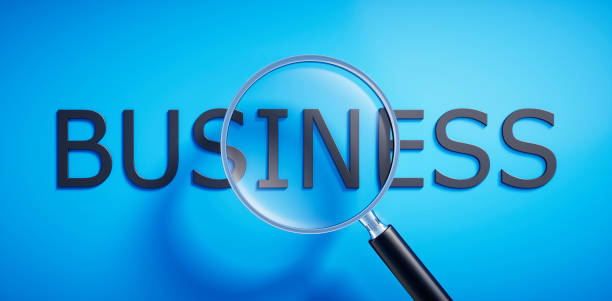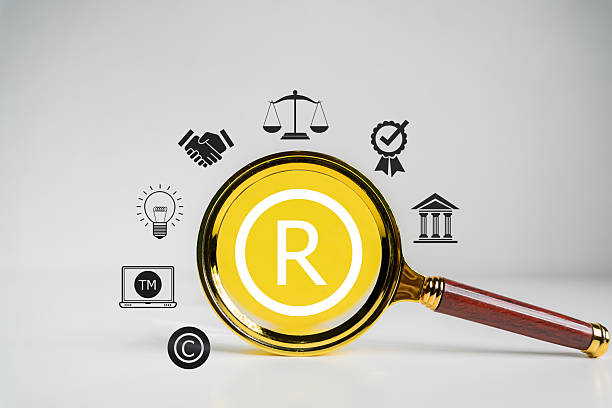Introduction to the World of Off-Page SEO and its Impact

In today’s highly competitive world, a strong online presence is vital for any business.
This presence is not achieved merely by having a beautiful website; rather, it requires complex optimization to make it visible to users.
#Off_Page_SEO, also known as #Off_Page_SEO, is an inseparable part of this process that focuses on activities outside your website to boost its credibility and ranking in search engine results.
These activities include building high-quality backlinks, engaging in social media, and gaining brand mentions in the online space.
Simply put, if On-Page SEO deals with the layout and content of your home, Off-Page SEO talks about your home’s reputation and popularity in the city.
The more your website’s credibility increases in the eyes of search engines, the greater your chances of ranking higher for relevant keywords.
This credibility is conveyed to search engines through various signals, the most important of which are backlinks.
A backlink means a link from another website to your website and acts like a vote of confidence.
The higher the number and quality of these votes, the more reputable and trustworthy search engines consider your website to be.
This process not only helps with search engine optimization but also leads to an increase in organic traffic and improved brand recognition.
Understanding these principles is the foundation of any successful Off-Page SEO strategy, which we will discuss in detail in the following chapters.
The importance of Off-Page SEO in ensuring a website’s visibility among a multitude of online competitors is unparalleled, and ignoring it can mean missing out on countless opportunities.
Therefore, for any business seeking online growth and development, a deep understanding of Off-Page SEO techniques and strategies is an absolute necessity.
Do you have an online store, but your sales aren’t as expected? Rasab with professional e-commerce website design, solves your problem forever!
✅ Significant increase in conversion rates and sales
✅ Unparalleled user experience for your customers
⚡ Click to get free consultation with Rasab!
Fundamental Principles of Off-Page SEO from a Professional Perspective

Off-Page SEO is a set of techniques and strategies used to improve a website’s ranking in search engine results pages (SERP) through activities performed outside the website.
From a professional perspective, this concept goes beyond merely link building and includes broader dimensions of branding activities and online public relations.
The most important foundation of Off-Page SEO is backlink building.
Backlinks are links that point from other websites to your website and are considered as a vote of confidence or endorsement from those websites.
The quality and quantity of these links significantly impact your domain authority and, ultimately, your keyword rankings.
But not only the number of links matters; the quality of the linking domain, topical relevance, and the link’s position on the page are also crucial factors.
A backlink from a reputable and relevant website is worth far more than dozens of links from low-quality or irrelevant websites.
In addition to backlinks, social media signals also play an important role in Off-Page SEO.
Although not directly confirmed by Google as a ranking factor, active and effective social media engagement can help increase brand awareness, drive direct traffic to the website, and consequently increase the likelihood of natural link building.
Sharing quality content, interacting with audiences, and increasing followers can indirectly positively impact your Off-Page SEO.
Furthermore, Brand Mentions, even without links, are recognized by search engines and can be considered a signal of a brand’s popularity and authority.
When your brand name is mentioned in news articles, blogs, forums, or other online platforms without a link, Google understands that your brand is being discussed and gaining attention.
This issue has gained increasing importance, especially in Google’s advanced algorithms, which focus on semantic understanding rather than just keywords.
Finally, producing viral content and distributing it across various platforms is also considered part of Off-Page SEO.
Content that is naturally shared by users leads to increased visibility, traffic, and ultimately, natural link building.
This approach requires a deep understanding of the audience and the ability to produce content that is not only informative and valuable but also creates a sense of entertainment or thought-provocation in users to encourage them to share.
All these components together form a comprehensive Off-Page SEO strategy, whose ultimate goal is to increase domain authority and improve the website’s position in search results.
Success in Off-Page SEO requires patience, precise strategizing, and continuous updating with changes in search engine algorithms.
In-depth Link Building Strategies for Strong Off-Page SEO

Link building is the beating heart of Off-Page SEO, and implementing in-depth and intelligent strategies in this area can make a huge difference in your website’s ranking and authority.
Simply accumulating links at any cost is no longer effective; the focus should be on quality, topical relevance, and the naturalness of the process.
One of the most effective methods is Guest Posting.
In this method, you write high-quality content for a website relevant to your field of work and, in return, receive one or more backlinks to your own website.
Choosing websites with high Domain Authority (DA) and relevance to your industry is key to success in this strategy.
This not only provides you with backlinks but also increases referral traffic and brand awareness.
Another method is Broken Link Building.
In this technique, you look for broken links on reputable websites in your niche.
Then you contact the website owner and offer to replace the broken link with equivalent and better content from your own website.
This method is mutually beneficial: you get a link, and the host website fixes a lost link, which helps improve their user experience and internal SEO.
This approach requires thorough research and the use of specific tools.
Resource Page Link Building is also a powerful strategy.
Many websites have pages that provide a list of useful and relevant resources in a specific area.
You can identify websites that have such pages and then contact them to add your valuable content as a useful resource to their list.
These types of links usually come from high-authority pages and can have a significant impact on your Off-Page SEO.
Furthermore, participating in forums and specialized communities and providing useful and relevant answers with natural linking to your content (if forum rules permit and it’s not spam) can help attract traffic and even build Nofollow links, which, although they don’t directly impact link authority, contribute to backlink profile diversity and positive signals to search engines.
Also, Digital PR and publishing press releases on reputable news websites can lead to acquiring high-quality links.
The ultimate goal of all these strategies is to create a natural, diverse, and high-quality backlink profile that shows search engines your website is a reliable and authoritative source in its field.
Table 1: Types of Backlinks and Their Impact on Off-Page SEO
| Backlink Type | Description | Impact on Off-Page SEO | Example |
|---|---|---|---|
| Editorial Backlinks | Links naturally placed within the content of a reputable article or blog because your content is a useful resource. | Highest value; transfer significant authority and traffic. | A link to research from your site in a major news article. |
| Guest Post Links | Links acquired from articles you’ve written on other websites. | High value; controllable and provides branding opportunities. | Writing an article for an industry blog and linking back to your site. |
| Profile/Directory Links | Links obtained from user profiles on forums, social networks, or web directories. | Medium to low value; primarily for profile diversity. | A link to your website in the “About Us” section of a forum. |
| User-Generated Content (UGC) Links | Links that users provide to your content in comments, forums, or their own blogs. | Variable; depends on source authority and naturalness. | A link to your product in a site’s comment section. |
| Broken Links | Old links that are no longer active and are replaced with your substitute content. | High value; an opportunity to replace a dead link with your content. | Offering your content to a website with a broken link. |
The Art of Acquiring Quality Backlinks for Sustainable Off-Page SEO

Acquiring quality backlinks is, in the true sense of the word, an art that requires a deep understanding of strategy and proper execution.
The goal is not merely to increase the number of links, but to focus on links that point to your website from reputable, relevant, and high-Domain Authority websites.
A quality backlink acts as a powerful endorsement from search engines, indicating that your content is valuable and trustworthy.
To achieve these types of links, several key approaches exist.
The first step is producing excellent and unique content.
Content that provides comprehensive, in-depth, and practical information naturally attracts more links.
This content can include original research, statistical data, comprehensive guides, engaging infographics, or educational videos.
If your content is truly valuable, others will naturally cite it as their source.
This approach is often referred to as “Link Bait”, not in a deceptive sense, but as producing content so useful that it encourages others to link to it.
The second approach is Digital PR.
This involves building relationships with journalists, bloggers, and industry influencers.
When you have significant news, a new study, or an innovative product, you can introduce it to them through press releases or direct communication.
If they find your content appealing, they may mention it and link to it in their articles.
These links typically come from news websites or high-authority blogs, which have significant Off-Page SEO value.
The third point is anchor text diversity.
Anchor text is the text in which the link is embedded.
Using repetitive and perfectly optimized anchor text for keywords can send a negative signal to search engines and even lead to penalties.
It’s better to use a variety of anchor texts, including brand name, bare URL, generic keywords, long-tail keywords, and irrelevant anchor texts, to make the link profile appear more natural.
Google looks for natural patterns, and any attempt to manipulate the system using artificial links or over-optimized anchor texts can harm your Off-Page SEO.
Finally, continuous monitoring of the backlink profile is essential.
You should regularly check new links and ensure that no spammy or harmful links point to your website.
Using SEO tools to identify toxic links and, if necessary, using Google’s Disavow tool to disclaim association with these links, is part of maintaining sustainable Off-Page SEO.
Remember that success in Off-Page SEO is a long-term process, and its results appear gradually, but it’s worth the investment.
Does your current website reflect your brand’s credibility as it should? Or does it drive away potential customers?
Rasab, with years of experience in professional corporate website design, is your comprehensive solution.
✅ A modern, beautiful website aligned with your brand identity
✅ Significant increase in lead generation and new customer acquisition
⚡ Contact Rasab now for a free consultation on corporate website design!
Beyond Backlinks: Social Signals and Brand Mentions in Off-Page SEO

While backlinks continue to be the backbone of Off-Page SEO, the search ecosystem is evolving, and other factors are becoming increasingly important.
Two of these important factors are social media signals and Brand Mentions, which play an indirect but significant role in modern Off-Page SEO strategies.
Although Google has not officially stated that likes, shares, or followers directly act as ranking factors, their indirect impact on Off-Page SEO is undeniable.
Strong and effective activity on social networks can help your SEO in several ways.
Firstly, engaging and shareable content on platforms like Twitter, LinkedIn, Facebook, and Instagram can lead to increased content visibility.
The more people see and share your content, the higher the likelihood that a reputable website will link to it.
This natural link building is the most valuable type of backlink.
Secondly, social media activity can increase direct traffic to your website.
Higher traffic and increased user engagement send a positive signal to search engines that your website is valuable and popular.
Thirdly, brand strengthening through social media helps with your brand’s recognition and credibility.
A strong and recognized brand has greater potential to attract natural links and brand mentions.
Brand mentions, sometimes also known as “unlinked mentions”, occur when your company, product, or website name is mentioned in online content (such as news articles, blogs, forums, reviews) without a hyperlink.
Google, through its natural language processing and complex algorithms, can identify these mentions and consider them as a signal of your brand’s credibility and popularity.
The more these mentions come from reputable sources, the more important and trustworthy search engines consider your brand to be.
This issue is particularly crucial for large and well-known brands and is an inseparable part of their Off-Page SEO strategy.
Therefore, a comprehensive Off-Page SEO strategy not only focuses on link building but also includes planning for strengthening social media presence and increasing brand mentions.
This multifaceted approach shows search engines that your website is a reputable source and a genuine brand in the online space, not only having quality content but also being active and noticed in the online community.
Analyzing Competitors’ Off-Page SEO Strategies: An Analytical Approach

In any competitive field, competitor analysis is a crucial step for formulating effective strategies, and Off-Page SEO is no exception.
A precise understanding of key competitors’ Off-Page SEO strategies allows you to identify their strengths and weaknesses and discover new opportunities to improve your ranking in search results.
This is an analytical and absolutely essential approach for advancing off-page SEO goals.
The first step in this analysis is identifying real SEO competitors.
These are not necessarily your direct business competitors, but rather websites that rank for similar keywords as you do.
Using SEO tools like Ahrefs, Semrush, Moz, and SimilarWeb can be very helpful in this regard.
These tools help you see your competitors’ Domain Authority, the number of their backlinks, referring domains, and the anchor texts they use.
After identifying competitors, you should proceed to analyze their backlink profiles.
This involves examining referring domains: Which websites have linked to your competitors? Are these websites reputable? Can they also link to you? Look for patterns; for example, if several competitors have acquired links through guest posting on a specific website, this could be an opportunity for you.
Also, pay attention to the type of links; are most links from directories, forums, or editorial articles? This analysis gives you a comprehensive view of their link-building strategies.
More important than the number of links is the quality and relevance of the links.
Check whether competitors’ links are from websites relevant to your industry.
A link from an irrelevant website, even if it has a high DA, has less value than a relevant link with a moderate DA.
Also, pay attention to the anchor texts that competitors use.
Do they have anchor text diversity, or are they over-optimized? This can be a sign of risky or spammy strategies.
In addition to backlinks, competitors’ social media presence and their level of engagement should also be examined.
Do they share specific content on social media that goes viral? Do they regularly interact with their followers? These activities can lead to increased brand awareness and, consequently, improved Off-Page SEO.
Finally, using the gathered information, you can identify new link-building opportunities, localize and implement successful competitor strategies, and learn from their mistakes.
This continuous analysis is part of a dynamic strategy for off-site optimization.
Common Mistakes and Hidden Dangers in Off-Page SEO

On the path to improving Off-Page SEO, many webmasters and SEO specialists may make mistakes that not only harm website rankings but can also lead to heavy penalties from search engines.
Understanding these mistakes and hidden dangers is vital for maintaining the health and sustainability of your website’s SEO.
One of the most common and dangerous mistakes is focusing solely on backlink quantity over quality.
In the past, websites could rank with any number of links, even from low-quality sources.
But with advanced Google algorithms like Penguin, this approach has become severely outdated.
Links from spammy, irrelevant websites, or link farms can be identified as toxic links and lead to ranking drops or manual penalties.
Another mistake is the excessive and unnatural use of exact match keyword anchor texts.
If most of your backlinks use fully optimized anchor texts for a specific keyword, this appears suspicious to search engines and can be considered an attempt to manipulate rankings.
A natural link profile should include a variety of anchor texts, including brand name, bare URL, generic phrases, and relevant keywords.
Buying links or participating in link exchange networks are also fatal mistakes.
Google has explicitly stated that buying and selling links with the aim of manipulating rankings is against their guidelines.
These activities are easily detected by Google’s algorithms and lead to severe penalties from which recovery will be very difficult.
Ignoring periodic backlink profile review and clean-up (Link Audit) is also a hidden danger.
Spammy websites may automatically link to you (Negative SEO), or links that were useful in the past may now be of low quality.
Using tools like Ahrefs or Semrush to identify these toxic links and employing Google’s Disavow tool to disclaim association with them is an essential part of sustainable Off-Page SEO maintenance.
Failure to address these links can harm your Off-Page SEO ranking.
Finally, not having a comprehensive and long-term strategy for Off-Page SEO can lead to unstable results.
Off-Page SEO is a continuous process, and its results appear over time.
Haste and the use of shortcut techniques (Black Hat SEO) almost always end up harming the website.
Focusing on building natural relationships, producing valuable content, and acquiring quality links is the only way to achieve sustainable and successful results in Off-Page SEO.
Table 2: White Hat and Black Hat Off-Page SEO Techniques
| Technique Type | Description | Impact on Off-Page SEO | Penalty Risk |
|---|---|---|---|
| White Hat | Guest posting, digital PR, content-based link building, creating valuable content, outreach. | Long-term, sustainable, increases domain authority. | Very low (almost zero). |
| Black Hat | Link buying, use of link farms, automated link building, comment spam, PBN (Private Blog Network). | Short-term, unstable, severe ranking drop in the future. | Very high, leads to manual and algorithmic penalties. |
Measuring Success and Key Performance Indicators for Off-Page SEO

To ensure the effectiveness of Off-Page SEO strategies, regular and accurate performance measurement is crucial.
This allows you to evaluate the impact of your efforts and optimize strategies if necessary.
Specific Key Performance Indicators (KPIs) exist to help you measure Off-Page SEO success.
The first and perhaps most important KPI is the number of Referring Domains.
This metric indicates the number of unique websites that have linked to your website.
An increase in this number is a positive sign of your backlink profile’s growth, provided these domains are of high quality.
The total number of backlinks is also important, but the number of referring domains is more significant because it indicates the diversity of link sources.
The second important indicator is Domain Authority (DR/DA) and Page Authority (PR/PA).
These metrics (provided by tools like Moz and Ahrefs) indicate the overall strength and authority of the website and its specific pages in the eyes of search engines.
An increase in these values is directly related to your Off-Page SEO success.
The higher your domain authority, the greater your chances of ranking for more difficult keywords.
Keyword Rankings is a crucial KPI that indicates whether your Off-Page SEO efforts have led to an improvement in your website’s position for target keywords.
Monitoring changes in the rankings of high-demand keywords in the SERP gives you a direct insight into the impact of your work.
Additionally, Organic Traffic from search is the most accurate indicator of Off-Page SEO’s impact.
If the number of users entering through search is increasing, this is a strong sign of success.
In addition to these, other metrics such as the ratio of DoFollow to NoFollow links (which should appear natural), anchor text diversity (to avoid penalties), and the speed of link growth should also be regularly monitored.
Sudden and unnatural growth in the number of links can be a negative signal.
Using SEO analytical tools to monitor these KPIs is essential.
Off-Page SEO is a long-term investment, and regularly measuring these indicators helps ensure you are on the right track and utilizing your resources optimally.
This measurement allows you to quickly identify any problems or new opportunities and improve your off-site optimization strategy.
Are your online sales not as you expect? With Rasab, solve the problem of low sales and poor user experience forever!
✅ Increase conversion rate from visitor to customer
✅ Create an enjoyable user experience and increase customer trust
⚡ Act now to receive a free consultation!
The Future of Off-Page SEO: Trends and Predictions

The world of SEO is constantly changing and evolving, and Off-Page SEO is no exception.
With the advancement of search engine algorithms, especially Google’s algorithms empowered by artificial intelligence and machine learning, Off-Page SEO approaches are becoming more complex and intelligent.
The future of Off-Page SEO will focus not only on links but on the broader concepts of authority, branding, and user experience.
One of the key trends is the increasing importance of Google’s E-E-A-T signals (Experience, Expertise, Authoritativeness, Trustworthiness).
Google is increasingly looking for sources that not only have quality content but also demonstrate real expertise, authority, and trustworthiness.
Off-Page SEO plays a vital role in this; backlinks from reputable sources, brand mentions in news and media, and a positive presence on social media all contribute to strengthening E-E-A-T.
This means that simply acquiring links from any source is no longer sufficient; instead, you must obtain links from sources that themselves possess authority and expertise.
Interactive and viral content will play a more prominent role.
Given content saturation, content that can attract users, encourage them to share, and foster discussion will be of higher value.
This type of content naturally attracts more links and brand mentions, which is highly beneficial for Off-Page SEO.
Videos, podcasts, interactive infographics, and online tools are among the formats that can be leaders in this area.
The role of Digital PR in Off-Page SEO will become more pronounced.
Instead of simply requesting links, businesses will focus on crafting compelling stories and disseminating them through news outlets and popular blogs.
This approach not only leads to acquiring natural and powerful links but also significantly enhances brand recognition and authority.
These types of links, often coming from high-authority news websites, hold immense value for off-site optimization.
Finally, Artificial Intelligence (AI) and Machine Learning (ML) will play a pivotal role not only in search algorithms but also in SEO tools.
Future Off-Page SEO tools will be able to identify toxic links with greater accuracy, suggest link-building opportunities, and even analyze the content of linking websites.
Overall, the future of Off-Page SEO is moving towards a more comprehensive, intelligent, and truly authority-based approach, where quality, relevance, and naturalness take precedence.
Off-Page SEO and Its Integration with the Overall SEO Strategy

Off-Page SEO, though it may seem like an independent field, is in fact an inseparable and complementary part of a comprehensive Search Engine Optimization (SEO) strategy.
Long-term success in ranking on Google and other search engines requires complete integration and coordination among On-Page SEO, Technical SEO, and Off-Page SEO.
None of these three components alone can fully unleash your website’s potential; rather, it is the synergy resulting from their combination that leads to desired outcomes.
On-Page SEO pertains to your website’s content and internal structure: proper keyword usage, content quality, title and meta tags, image optimization, and URL structure.
If your website’s content is poor or not properly optimized, even the best Off-Page SEO strategy cannot have the desired effect.
Search engines aim to provide the best and most relevant results to users, and if your content does not meet their needs, the acquired links will also not be effective.
Technical SEO addresses the infrastructural aspects of a website: loading speed, mobile-friendliness, crawlable and indexable structure, HTTPS security, and crawl errors.
If your website has technical issues and search engines cannot easily crawl and index it, all On-Page and Off-Page SEO efforts will be fruitless.
A slow or inaccessible website creates a poor user experience that can harm SEO rankings, even if you have dozens of strong backlinks.
In this ecosystem, Off-Page SEO plays the role of increasing authority and trust.
Quality backlinks and branding signals tell search engines that your website is not only strong in terms of content and technical aspects but is also approved and referred to within the online community.
These three components must work together.
For example, a high-quality article (good On-Page SEO) that is well-optimized technically (good Technical SEO) has high potential to attract natural and quality backlinks (strong Off-Page SEO).
For effective integration, continuous communication between content, technical, and SEO teams is essential.
The keyword strategy used in On-Page SEO should also be considered when planning anchor texts for Off-Page SEO.
Furthermore, newly produced content should have link-building potential, and the Off-Page SEO team should actively seek link-building opportunities for that content.
This holistic approach provides search engines with a complete and integrated picture of your website, maximizing your chances of achieving the highest rankings in off-page SEO.
Frequently Asked Questions
| Question | Answer |
|---|---|
| What is Off-Page SEO? | Off-Page SEO refers to a set of activities and methods performed outside your website to improve its ranking in search engines, such as building backlinks. |
| Why is Off-Page SEO important for a website? | Off-Page SEO shows search engines that your website is authoritative, popular, and trustworthy, which helps increase domain authority and rankings. |
| What is the most important factor in Off-Page SEO? | Backlinks, or links from other sites to your site, are the most important factor, especially if they are from reputable sites. |
| What characterizes a quality backlink? | A quality backlink comes from reputable sites (with high authority), is relevant to your site’s topic, and uses appropriate (natural) anchor text. |
| Do social networks play a role in Off-Page SEO? | Yes, sharing content on social networks can help increase visibility and indirect traffic, and send positive social signals to search engines. |
| What is a PBN and is it recommended? | A PBN (Private Blog Network) is a network of private websites used to build backlinks to the main site. Google considers this method spam, and its use is strongly discouraged and can lead to penalties. |
| How is natural link building done? | By producing valuable and shareable content, building relationships with bloggers and influencers, and attracting media attention. |
| What is anchor text in a backlink? | It is the text in which the link is placed. Using diverse anchor texts relevant to the keyword appears more natural and helps SEO. |
| What is the connection between Local SEO and Off-Page SEO? | Local SEO includes off-site activities such as Google My Business listings, local directories, and online reviews, which help businesses appear in local search results. |
| How can one check competitor backlinks? | By using tools like Ahrefs, Semrush, or Moz, you can analyze competitors’ backlink profiles and identify new link-building opportunities. |
And other services of Rasab Advertising Agency in the field of advertising
Smart Digital Advertising: Revolutionize sales growth with personalized user experience.
Smart Advertising Campaign: Transform user engagement with precise audience targeting.
Smart Digital Advertising: An effective tool for increasing sales by optimizing key pages.
Smart Custom Software: A blend of creativity and technology for digital branding through user experience customization.
Smart Brand Identity: Designed for businesses seeking online growth through the use of real data.
And over hundreds of other services in the field of internet advertising, advertising consulting, and organizational solutions
Internet Advertising | Advertising Strategy | Advertorial
Sources
The Importance of Off-Page SEO in Digikala Mag, Comprehensive Guide to Off-Page SEO in Hamyar SEO, Strategic Off-Page SEO on Virgool, The Importance of Off-Page SEO on Asan SEO
? With Rasab Afarin, your business soars powerfully in the digital world. From responsive website design to search engine optimization, we are by your side to ensure a powerful and lasting web presence.
📍 Tehran, Mirdamad Street, next to Central Bank, Southern Kazeroun Alley, Ramin Alley, No. 6




